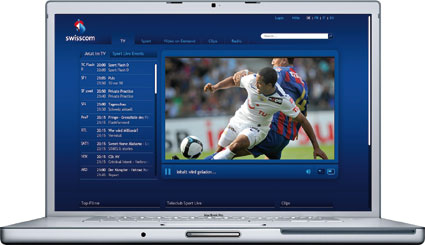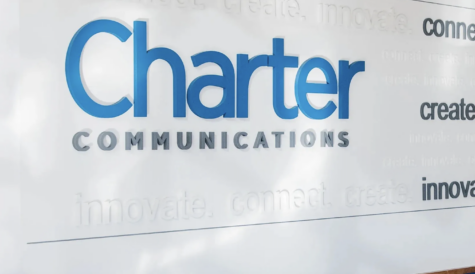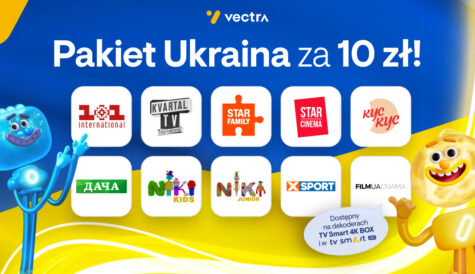The IPTV survey
 Which developments in the IPTV industry most surprised you last year?
Which developments in the IPTV industry most surprised you last year?
I think the rate at which there has been growing acceptance within the industry of OTT no longer being a threat, but complementary, has come as a surprise to many.
Alan Delaney, Ericsson
Fibre networks becoming a reality, even faster than expected (including coming to my home!) – which opens the door to delivering even richer convergence services, with a great consumer experience.
Véronique Malan, ADB
 The first was Adobe’s dynamic streaming development, which did not get a lot of attention, and then the announcement of Google TV and its initial flop. It is now clear that Google is trying to set a new standard in video delivery with Google TV, illustrated by their acquisition of Widevine as well as with their VB8 encoding technology. This development will likely have a significant impact on vendors and multi-screen operators.
The first was Adobe’s dynamic streaming development, which did not get a lot of attention, and then the announcement of Google TV and its initial flop. It is now clear that Google is trying to set a new standard in video delivery with Google TV, illustrated by their acquisition of Widevine as well as with their VB8 encoding technology. This development will likely have a significant impact on vendors and multi-screen operators.
Duncan Potter, Edgeware
The launch of Google TV was the most significant development – particularly the exceptionally strong reaction from the networks. In retrospect, one can understand how everyone felt threatened but this is the clash of the titans with the winners and losers yet to emerge.
Andrew Burke, Amino
The growth in the number of IPTV subscribers in 2010, as compared to 2009, was impressive. We saw also some of the first integrated multi-screen services come to market, including AT&T’s U-verse and Swisscom TV air (powered by Harmonic). We’re now seeing IPTV expand further through satellite deployments, such as SFR in France, which are addressing the problem of reach.
Thierry Fautier, Harmonic
It’s interesting to see how IPTV is taking off in China. Secondly, IPTV has long been the modern way to deliver TV and media services, compared to satellite and cable, but IPTV is facing competition from over-the-top. It will be one of the biggest changes in the industry.
Guillaume Lacroix, Orange
Multiscreen solutions; TV services on the web and mobile; web services on TV; remote TV management and evolution of 3D into standard television sets (but still a lack of content).
Frédérique Verbiest, Belgacom
We were surprised to discover that the content industry is not showing enough interest in the new technologies yet. For example, it is still difficult to launch services such as ‘start-over’ TV without violating any rights in the process.
Isabella Kosch, Swisscom
The success of tablet devices has been remarkable. These devices really seem to have changed the attitude of television operators toward the possibility of incorporating connected devices – whether tablet, or smartphone – into the viewing experience.
Jonathan Beavon, NDS
Given the dismal economic conditions, many companies continued to grow at a very rapid pace. Also, the relatively low adoption rate for an expanded range of IPTV clients – especially the rollout of PC client devices on their systems, surpirsed us. The uptake in this type of novel consumption platform has been considerably slower than we had expected – and the interfaces created on PC platforms seem to take less than full advantage of the connectivity and social networking options than you might expect.
Steve Christian, Verimatrix
How can operators make multi-screen and home networking most compelling?
By making it easy to install and to activate, with zero configuration. TV should evolve from a “family activity” towards an “individual experience”.
Frédérique Verbiest, Belgacom
Service providers can consider how the user experience can be simplified to the point where multiple screens are actually easy to use for the average consumer. Business models and content rights have held operators back: operators don’t yet seem sure how much revenue their new on-demand, streaming, or catch-up services will generate.
Jonathan Beavon, NDS
 Approach connected home services so the consumer always has the entire home network’s content seamlessly accessible on his chosen device. He should be able to use his iPad to watch pay TV in his garden, or add more video storage capabilities in his home by just plugging-in a new off-the-shelf device.
Approach connected home services so the consumer always has the entire home network’s content seamlessly accessible on his chosen device. He should be able to use his iPad to watch pay TV in his garden, or add more video storage capabilities in his home by just plugging-in a new off-the-shelf device.
Véronique Malan, ADB
Clearly, the number one factor is content. Sourcing a range of compelling content is a service provider’s Achilles heel. This is where OTT has an edge – allowing access to a plethora of content aggregators serving both the mainstream and the niche, which I believe will make their propositions more compelling. Equally the definition of content is expanding – not just new video but music/games/apps and the like.
Andrew Burke, Amino
EchoStar, through its affiliate Sling Media, has been delivering TV anywhere solutions from the beginning, the challenge being to make the proposition as user friendly as possible. The main challenges were to ensure the technology can adapt to varying bandwidths and, of course, to ensure the solution is compatible with as many connected devices as possible.
Ian Walker, EchoStar
 The key is to make things as simple as possible. Multiscreen is about managing complexity in a user friendly way, giving customers easy access to content while seamlessly managing complexity like location, video formats, cross platform metadata etc.
The key is to make things as simple as possible. Multiscreen is about managing complexity in a user friendly way, giving customers easy access to content while seamlessly managing complexity like location, video formats, cross platform metadata etc.
Alan Delaney, Ericsson
While the iPad is the most talked about of the screens, it is the PC that is still seeing the greatest traffic, while smartphone platforms are gaining in popularity. VOD and catch-up services are still more popular than live streaming in general.
Thierry Fautier, Harmonic
The ability to maintain the position we have on TV on newer screens is an important challenge. Tablets, PCs and connected TVs are not within our control and the customer is free to choose whatever service they want on these screens. We need to be preferred on those screens like we are on TV sets.
Guillaume Lacroix, Orange
There will be a larger number of additional functions such as apps that set digital television even more apart from analogue television. Furthermore, TV experiences must be designed consistently across additional technologies and end devices.
Isabella Kosch, Swisscom
Service providers need to push forward the parallel use of managed network technology and unmanaged network technology to help target their multiscreen subscriber base and make their offering particularly compelling. Technologies such as HTTP Live Streaming can augment this effort and offer attractive QoE advantages such as a smooth, continuous video presentation.
Verimatrix, Steve Christian
By making it easy to install and to activate, with zero configuration. TV should evolve from a “family activity” towards an “individual experience”.
Frédérique Verbiest, Belgacom
Service providers can consider how the user experience can be simplified to the point where multiple screens are actually easy to use for the average consumer. Business models and content rights have held operators back: operators don’t yet seem sure how much revenue their new on-demand, streaming, or catch-up services will generate.
Jonathan Beavon, NDS
Approach connected home services so the consumer always has the entire home network’s content seamlessly accessible on his chosen device. He should be able to use his iPad to watch pay TV in his garden, or add more video storage capabilities in his home by just plugging-in a new off-the-shelf device.
Véronique Malan, ADB
Clearly, the number one factor is content. Sourcing a range of compelling content is a service provider’s Achilles heel. This is where OTT has an edge – allowing access to a plethora of content aggregators serving both the mainstream and the niche, which I believe will make their propositions more compelling. Equally the definition of content is expanding – not just new video but music/games/apps and the like.
Andrew Burke, Amino
EchoStar, through its affiliate Sling Media, has been delivering TV anywhere solutions from the beginning, the challenge being to make the proposition as user friendly as possible. The main challenges were to ensure the technology can adapt to varying bandwidths and, of course, to ensure the solution is compatible with as many connected devices as possible.
Ian Walker, EchoStar
 The key is to make things as simple as possible. Multiscreen is about managing complexity in a user friendly way, giving customers easy access to content while seamlessly managing complexity like location, video formats, cross platform metadata etc.
The key is to make things as simple as possible. Multiscreen is about managing complexity in a user friendly way, giving customers easy access to content while seamlessly managing complexity like location, video formats, cross platform metadata etc.
Alan Delaney, Ericsson
While the iPad is the most talked about of the screens, it is the PC that is still seeing the greatest traffic, while smartphone platforms are gaining in popularity. VOD and catch-up services are still more popular than live streaming in general.
Thierry Fautier, Harmonic
The ability to maintain the position we have on TV on newer screens is an important challenge. Tablets, PCs and connected TVs are not within our control and the customer is free to choose whatever service they want on these screens. We need to be preferred on those screens like we are on TV sets.
Guillaume Lacroix, Orange
There will be a larger number of additional functions such as apps that set digital television even more apart from analogue television. Furthermore, TV experiences must be designed consistently across additional technologies and end devices.
Isabella Kosch, Swisscom
Service providers need to push forward the parallel use of managed network technology and unmanaged network technology to help target their multiscreen subscriber base and make their offering particularly compelling. Technologies such as HTTP Live Streaming can augment this effort and offer attractive QoE advantages such as a smooth, continuous video presentation.
Verimatrix, Steve Christian
By making it easy to install and to activate, with zero configuration. TV should evolve from a “family activity” towards an “individual experience”.
Frédérique Verbiest, Belgacom
Service providers can consider how the user experience can be simplified to the point where multiple screens are actually easy to use for the average consumer. Business models and content rights have held operators back: operators don’t yet seem sure how much revenue their new on-demand, streaming, or catch-up services will generate.
Jonathan Beavon, NDS
Approach connected home services so the consumer always has the entire home network’s content seamlessly accessible on his chosen device. He should be able to use his iPad to watch pay TV in his garden, or add more video storage capabilities in his home by just plugging-in a new off-the-shelf device.
Véronique Malan, ADB
 Clearly, the number one factor is content. Sourcing a range of compelling content is a service provider’s Achilles heel. This is where OTT has an edge – allowing access to a plethora of content aggregators serving both the mainstream and the niche, which I believe will make their propositions more compelling. Equally the definition of content is expanding – not just new video but music/games/apps and the like.
Clearly, the number one factor is content. Sourcing a range of compelling content is a service provider’s Achilles heel. This is where OTT has an edge – allowing access to a plethora of content aggregators serving both the mainstream and the niche, which I believe will make their propositions more compelling. Equally the definition of content is expanding – not just new video but music/games/apps and the like.
Andrew Burke, Amino
EchoStar, through its affiliate Sling Media, has been delivering TV anywhere solutions from the beginning, the challenge being to make the proposition as user friendly as possible. The main challenges were to ensure the technology can adapt to varying bandwidths and, of course, to ensure the solution is compatible with as many connected devices as possible.
Ian Walker, EchoStar
The key is to make things as simple as possible. Multiscreen is about managing complexity in a user friendly way, giving customers easy access to content while seamlessly managing complexity like location, video formats, cross platform metadata etc.
Alan Delaney, Ericsson
While the iPad is the most talked about of the screens, it is the PC that is still seeing the greatest traffic, while smartphone platforms are gaining in popularity. VOD and catch-up services are still more popular than live streaming in general.
Thierry Fautier, Harmonic
The ability to maintain the position we have on TV on newer screens is an important challenge. Tablets, PCs and connected TVs are not within our control and the customer is free to choose whatever service they want on these screens. We need to be preferred on those screens like we are on TV sets.
Guillaume Lacroix, Orange
There will be a larger number of additional functions such as apps that set digital television even more apart from analogue television. Furthermore, TV experiences must be designed consistently across additional technologies and end devices.
Isabella Kosch, Swisscom
Service providers need to push forward the parallel use of managed network technology and unmanaged network technology to help target their multiscreen subscriber base and make their offering particularly compelling. Technologies such as HTTP Live Streaming can augment this effort and offer attractive QoE advantages such as a smooth, continuous video presentation.
Verimatrix, Steve Christian
By making it easy to install and to activate, with zero configuration. TV should evolve from a “family activity” towards an “individual experience”.
Frédérique Verbiest, Belgacom
 Service providers can consider how the user experience can be simplified to the point where multiple screens are actually easy to use for the average consumer. Business models and content rights have held operators back: operators don’t yet seem sure how much revenue their new on-demand, streaming, or catch-up services will generate.
Service providers can consider how the user experience can be simplified to the point where multiple screens are actually easy to use for the average consumer. Business models and content rights have held operators back: operators don’t yet seem sure how much revenue their new on-demand, streaming, or catch-up services will generate.
Jonathan Beavon, NDS
Approach connected home services so the consumer always has the entire home network’s content seamlessly accessible on his chosen device. He should be able to use his iPad to watch pay TV in his garden, or add more video storage capabilities in his home by just plugging-in a new off-the-shelf device.
Véronique Malan, ADB
Clearly, the number one factor is content. Sourcing a range of compelling content is a service provider’s Achilles heel. This is where OTT has an edge – allowing access to a plethora of content aggregators serving both the mainstream and the niche, which I believe will make their propositions more compelling. Equally the definition of content is expanding – not just new video but music/games/apps and the like.
Andrew Burke, Amino
EchoStar, through its affiliate Sling Media, has been delivering TV anywhere solutions from the beginning, the challenge being to make the proposition as user friendly as possible. The main challenges were to ensure the technology can adapt to varying bandwidths and, of course, to ensure the solution is compatible with as many connected devices as possible.
Ian Walker, EchoStar
The key is to make things as simple as possible. Multiscreen is about managing complexity in a user friendly way, giving customers easy access to content while seamlessly managing complexity like location, video formats, cross platform metadata etc.
Alan Delaney, Ericsson
While the iPad is the most talked about of the screens, it is the PC that is still seeing the greatest traffic, while smartphone platforms are gaining in popularity. VOD and catch-up services are still more popular than live streaming in general.
Thierry Fautier, Harmonic
The ability to maintain the position we have on TV on newer screens is an important challenge. Tablets, PCs and connected TVs are not within our control and the customer is free to choose whatever service they want on these screens. We need to be preferred on those screens like we are on TV sets.
Guillaume Lacroix, Orange
There will be a larger number of additional functions such as apps that set digital television even more apart from analogue television. Furthermore, TV experiences must be designed consistently across additional technologies and end devices.
Isabella Kosch, Swisscom
How should service providers respond to the threat from OTT services?
The way in which telcos should respond is through better content propositions, richer and stickier services, innovation around content to multiple platforms, and by leveraging their knowledge of billing relationships and understanding of customer profiles.
Alan Delaney, Ericsson
OTT services present a threat to the IPTV platform because they have the ability to deliver unique content in a way that can be consumed across a multitude of devices. Telco operators can respond to it by offering their own over-the-top service, and by offering differentiated services in terms of quality. Quality is what makes the difference in the OTT space.
Duncan Potter, Edgeware
This is the traditional challenge of keeping the consumers’ eyeballs on your service rather than on someone else’s. The opportunity for telco operators is to make convergence a reality: offering linear TV (broadcast and IP), over-the-top and home networking in one easy package, with one remote control and one easy-to-use interface.
Veronique Malan, ADB
OTT probably is a threat in the sense that it offers a new way for customers to access video content. But we are in a very strong position because we have access to very good content. Having a large installed base is important too. Also, the popularity of linear channels is still very strong and they are hard to deliver over-the-top. If you can merge linear services with on-demand services, there is no reason why the customer would leave your service environment to find the same content elsewhere.
Guillaume Lacroix, Orange
There are two possible approaches: either the negative approach of penalizing bandwidth usage for OTT, or the positive approach of offering higher value or exclusive services by joining the OTT providers in order to provide on-demand and other services.
Frédérique Verbiest, Belgacom
Do nothing, which is risky because if subscribers don’t perceive and value the benefits of the operator’s own IPTV services, then the operator will face the danger of cord cutting. Invest in similar multi-screen OTT services to bring their own content to connected devices. Strike a deal with online content aggregators to extend an existing service to the operator’s own platform. There is potential for operators to share revenue with third party OTT providers to bring their services to operator branded portals on connected TVs.
Thierry Fautier, Harmonic,
Alternative internet video services don’t yet seem to be a very formidable threat to existing digital TV subscriber bases, especially when you consider the rate at which IPTV service offerings are growing. However, we advise our customers that the best form of defence is attack. We work with our IPTV and hybrid customers to ensure they are taking advantage of advanced internet TV technologies and presenting their service and brand on all screens.
Steve Christian, Verimatrix
 Operators are already responding by implementing OTT services as part of their offering so wholesale cord-cutting seems unlikely. OTT, like free DTT previously, may well provide options for people who can’t or won’t subscribe to pay TV services.
Operators are already responding by implementing OTT services as part of their offering so wholesale cord-cutting seems unlikely. OTT, like free DTT previously, may well provide options for people who can’t or won’t subscribe to pay TV services.
Ian Walker, EchoStar
OTT and connected TV products can bring content directly to the end customer. Yet for telecommunications providers such services are not only a threat, but an opportunity as well. By successfully integrating relevant services (e.g. integration of additional content directly in the platform), they can stand out from the crowd.
Isabella Kosch, Swisscom
OTT solutions and the connected TV trend are a great opportunity for IPTV players to differentiate their products especially from cable guys. Operators can integrate OTT in their service and bring internet on to TVs.
Mitja Lazar, SiOL TV
We don’t see it as a threat to IPTV – more of a complement. The hybrid approach of IPTV/OTT delivers the best of both worlds and if executed well will not be a competitive threat for telco operators. The more devices in the home that can display their services the better.
Andrew Burke, Amino
What lessons has the industry learned from previous IPTV deployments?
 There is a balance to be found between pure, old fashioned TV and newer services. You can’t force customers to adapt to new ways to watch TV and you can’t disturb your customers by launching anything too flashy.
There is a balance to be found between pure, old fashioned TV and newer services. You can’t force customers to adapt to new ways to watch TV and you can’t disturb your customers by launching anything too flashy.
Guillaume Lacroix, Orange
That if incumbent operators won’t provide compelling content (and service) then people will find a way to get it via the numerous internet TV services which are emerging (many of them founded on piracy).
Ian Walker, EchoStar
The most important lesson is to decide whether your IPTV deployment is defensive (i.e just to retain phone subscribers) or offensive (i.e. based on the decision to become a fully-fledged triple/quad play provider).
Véronique Malan, ADB
The industry tends to be ahead of the times. Most customers still want a television product that is easy and intuitive to use and is more ‘lean back’ than ‘lean forward’. If customers are flooded with countless new features, this could also have a deterrent effect. Therefore, it is important to acknowledge the customers’ current requirements and gently introduce them to new technologies.
Isabella Kosch, Swisscom
User friendliness, simplicity and outstanding customer experience.
Frédérique Verbiest, Belgacom
In order for the underlying infrastructure to deliver consistent QoE it needs to be highly scalable. Initially, it used to be done in a centralized fashion. However, as demand for content grows a centralized architecture is not able to deliver consistently high QoE and ends up putting strain on the network bandwidth. It has become essential that content is distributed as close to the subscriber as possible.
Distributed delivery architecture also allows for the use of features such as Fast Channel Change and improves QoE further down the line – especially the DSL line using techniques such as retransmission.
Duncan Potter, Edgeware
Essentially, IPTV is no different than any other kind of TV. It needs to be competitive in terms of content and service that it brings. The majority of our customers seem to be well aware of that basic requirement, as is indicated in their strong growth in the past year.
Steve Christian, Verimatrix
The single most important lesson is that it’s not about IPTV, it’s about TV. It’s not just a single silo/vertical – IPTV will encompass OTT, hybrid and multiscreen. The industry must strive to always understand and excite the customer through what it offers.
Alan Delaney, Ericsson
As with any service, economies of scale are important to the success of IPTV. One of the most important lessons learnt for the smaller operators is to use shared infrastructure and content sources. We believe that adding an OTT element to IPTV will further improve the opportunities for economies of scale.
Andrew Burke, Amino
A key learning has been recognising the need to build a very reliable service with strong Quality of Experience. Video quality is still one of the main complaints from users; this is largely due to the fact that operators are pushing compression to the limit. Services need to be comparable to or better than what already exists in terms of both content and user experience (for example PVR, catch up TV). Users are no longer just consuming content on the TV; just look at the success of Hulu or BBC iPlayer on PC and mobile phone. Harmonic believes there is great user demand for TV services outside of the living room, especially on the go as demonstrated by the most successful examples of mobile content services, iTunes, which has no ties to pay TV services. Enabling TV on-the-go for smartphones and tablets is likely to be the next big effort for content providers and aggregators in the near future.
Thierry Fautier, Harmonic
The most important lesson is to deploy solutions that enable service providers to deploy new services and better content delivery without changing the whole eco-system.
Mitja Lazar, SiOL TV
What key areas should IPTV operators be investing in right now?
Excellent experience, customer support, differentiation beyond turnaround linear and VOD. An area where IPTV operators can really begin to differentiate their services is through leveraging the two-way capability for personalisation.
Alan Delaney, Ericsson
Every operator has its own unique market and understands whether it’s necessary to pile it high and sell it cheap or to provide premium content in terms of price and quality.
Ian Walker, EchoStar
You don’t necessarily have to invest more in content, but you have to make sure you have the right content. We also have to make sure we invest in the technology that allows us to address the newer screens – we can’t just stay on the TV screen.
Guillaume Lacroix, Orange
Quality of service will continue to remain one of the basic prerequisites for any IPTV product. The more free content is available, the more important exclusive content becomes. This is the only way to create a true unique selling point. Another key topic is individualisation: functions such as live pause, VOD range, and the recording function all serve to create a customised TV experience.
Isabella Kosch, Swisscom
The entire mix – content, technology, advanced services – is important but fundamentally, without compelling content, the weaker IPTV operator will find it difficult to compete. The successful IPTV operations around the world undoubtedly have competitive and attractive content line-ups.
Jonathan Beavon, NDS
The parallel use of services over managed and unmanaged network technologies. Also, the integration of social networking seems to be a big driver to added value and an easy step for an IP-centric service organization to execute.
Steve Christian, Verimatrix
The big question is ‘what compelling services can IPTV operators offer subscribers that their competitors cannot?’ Harmonic believes mobile video on-the-go has the potential to be a unique selling proposition.
Thierry Fautier, Harmonic
The first focus should still be to provide a better quality of experience to the customers.
Frédérique Verbiest, Belgacom
Content is still king. Ensuring a compelling content line-up is paramount.
Andrew Burke, Amino
We’ll continue to accelerate our convergence strategy. We can add residential gateways with their connectivity software and create new end-to-end solutions for the operators.
Veronique Malan, ADB
 We plan to roll out many new OTT deployments that that will be operating in parallel with existing IPTV, hybrid and DVB installations.
We plan to roll out many new OTT deployments that that will be operating in parallel with existing IPTV, hybrid and DVB installations.
Steve Christian, Verimatrix
The primary objective is to continue to grow and move away from being perceived as a device-standard to a solution-standard.
Duncan Potter, Edgeware
As we deployed new IPTV middleware in 2010, our goal is to extend our costumer base on this platform and to provide maximum customer experience, which includes optimizing TV signal transport.
Mitja Lazar, SiOL TV
We want to maintain our industry lead in OTT solutions and services – but also to continue to build on our strong momentum in our core IPTV business.
Andrew Burke, Amino
To continue enhancing service providers’ ability to deliver video from a single location to multiple screens across multiple networks.
Thierry Fautier, Harmonic
More on-demand content. We are seeing that usage of on-demand is taking off with people becoming increasingly used to catch-up TV and so on.
Guillaume Lacroix, Orange
Additional channels, and our video-on-demand range is also going to be expanded. We are going to continue to press ahead with our network expansion in 2011.
Isabella Kosch, Swisscom
To capitalise on the convergence of broadband and broadcast in all its forms.
Jonathan Beavon, NDS



